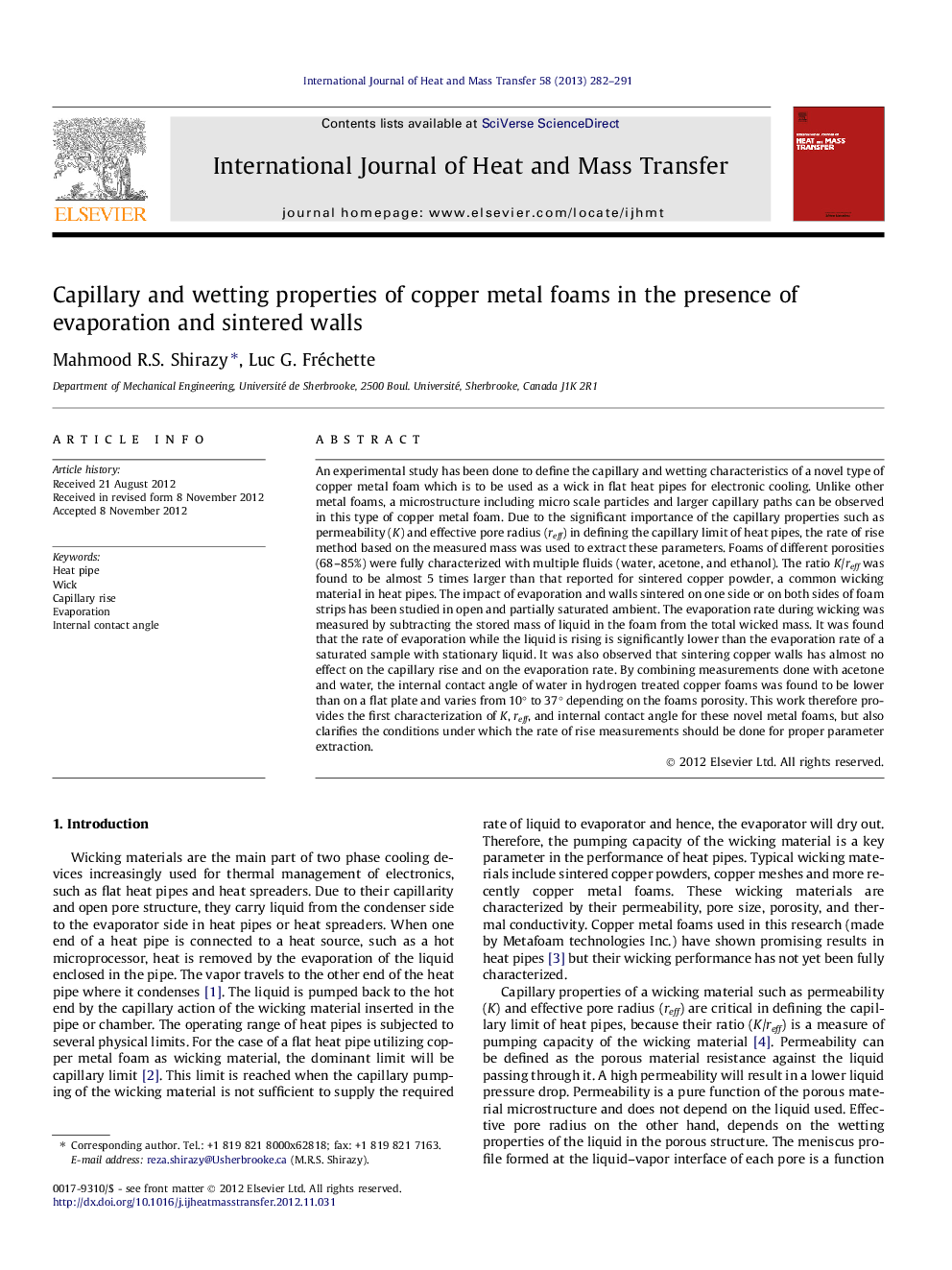| Article ID | Journal | Published Year | Pages | File Type |
|---|---|---|---|---|
| 658444 | International Journal of Heat and Mass Transfer | 2013 | 10 Pages |
Abstract
An experimental study has been done to define the capillary and wetting characteristics of a novel type of copper metal foam which is to be used as a wick in flat heat pipes for electronic cooling. Unlike other metal foams, a microstructure including micro scale particles and larger capillary paths can be observed in this type of copper metal foam. Due to the significant importance of the capillary properties such as permeability (K) and effective pore radius (reff) in defining the capillary limit of heat pipes, the rate of rise method based on the measured mass was used to extract these parameters. Foams of different porosities (68-85%) were fully characterized with multiple fluids (water, acetone, and ethanol). The ratio K/reff was found to be almost 5 times larger than that reported for sintered copper powder, a common wicking material in heat pipes. The impact of evaporation and walls sintered on one side or on both sides of foam strips has been studied in open and partially saturated ambient. The evaporation rate during wicking was measured by subtracting the stored mass of liquid in the foam from the total wicked mass. It was found that the rate of evaporation while the liquid is rising is significantly lower than the evaporation rate of a saturated sample with stationary liquid. It was also observed that sintering copper walls has almost no effect on the capillary rise and on the evaporation rate. By combining measurements done with acetone and water, the internal contact angle of water in hydrogen treated copper foams was found to be lower than on a flat plate and varies from 10° to 37° depending on the foams porosity. This work therefore provides the first characterization of K, reff, and internal contact angle for these novel metal foams, but also clarifies the conditions under which the rate of rise measurements should be done for proper parameter extraction.
Related Topics
Physical Sciences and Engineering
Chemical Engineering
Fluid Flow and Transfer Processes
Authors
Mahmood R.S. Shirazy, Luc G. Fréchette,
